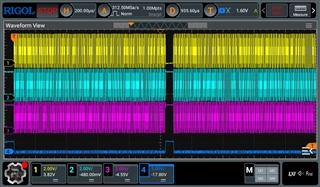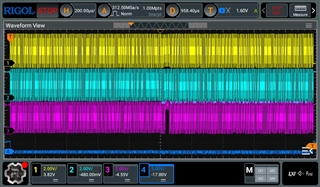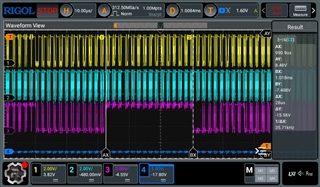Tool/software:
Hello experts,
I have a question about SPI communication with the CC3235MODASF WiFi module.
I am using the TI-Drivers SPI driver API to perform SPI communication.
The CC3235 acts as a slave and receives data from the master.
I am having issues with SPI communication being unable to be performed correctly depending on the size of the communication data.
As far as I have checked, it works fine up to a communication size of 1024, but when communicating with a size exceeding 1024, the callback function is not called.
Are there any restrictions on communication size when using the SPI driver API with CC3235MODASF?
Below is a portion of the verification code.
SPI_init();
SPI_Params_init(&spiParams);
spiParams.frameFormat = SPI_POL1_PHA1;
spiParams.mode = SPI_PERIPHERAL;
spiParams.transferCallbackFxn = transferCompleteFxn;
spiParams.transferMode = SPI_MODE_CALLBACK;
spiParams.bitRate = 20000000; //20M
peripheralSpi = SPI_open(CONFIG_SPI_PERIPHERAL, &spiParams);
transaction.count = SPI_MSG_LENGTH; //under 1025 OK, over 1025 NG
transaction.txBuf = (void *)peripheralTxBuffer;
transaction.rxBuf = (void *)peripheralRxBuffer;
bool transferOK;
transferOK = SPI_transfer(peripheralSpi, &transaction);
if(transferOK)
{
/* Wait until transfer has completed */
sem_wait(&peripheralSem);
}
Best regards
Egawa




